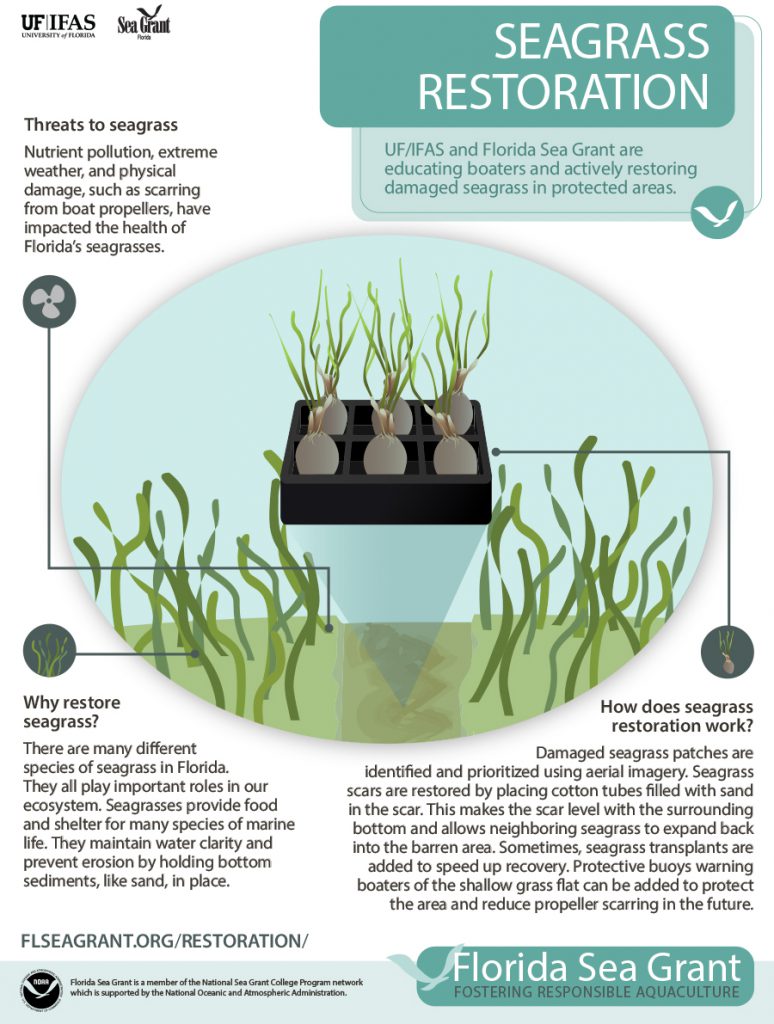 Experienced inshore boaters are all too familiar with the common sight of scarred seagrass. Seagrass meadows, located in shallow coastal waters, are vulnerable to damage by props, hulls, and anchors. The Nature Coast is especially vulnerable to scarring damage because of wide swaths of extremely shallow waters. Scarred seagrass can sometimes recover naturally but the process can take many years. Other times, scars erode and expand to cause loss of adjacent seagrass.
Experienced inshore boaters are all too familiar with the common sight of scarred seagrass. Seagrass meadows, located in shallow coastal waters, are vulnerable to damage by props, hulls, and anchors. The Nature Coast is especially vulnerable to scarring damage because of wide swaths of extremely shallow waters. Scarred seagrass can sometimes recover naturally but the process can take many years. Other times, scars erode and expand to cause loss of adjacent seagrass.
What can we do?
While by far the best course of action is to prevent boating-related damage before it occurs, there are steps we can take to restore heavily scarred areas. While costly, intervening with direct seagrass restoration in appropriate areas can halt seagrass loss and reverse damage over time. In Citrus County, our team identified two scarred seagrass banks (Sandy Hook key and Fish Creek bay) that would benefit from restorative action. Over the past 6 months, we installed over 7,000 sediment tubes (21,000 linear feet) to restore boating-related seagrass damage.
How do we restore scars?
- Map and identify scarring hotspots by examining aerial imagery
- Ground-truth and map individual scars within hotspots using highly accurate GPS
- Obtain permits for restoration work
- Produce the required number of sediment tubes to fill scars with clean sand. Sediment tubes are long cotton tubes filled with fine sands.
- Transport sediment tubes out to the site using a shallow draft barge
- Divers place sediment tubes in scars, returning them to grade with surrounding meadow
- (optional) Seagrass planting units and/or small fertilizer additions to jump-start the restoration
- Monitor the site to track the return of seagrass into scarred areas

Why sediment tubes?
Seagrasses can spread and expand by extending their rhizomes. However, seagrass rhizomes can only grow horizontally and vertically. They cannot grow down into the trenches and holes characteristic of scars. Therefore, we must import sands in tubes to return the scars to the same elevation as the surrounding meadow. Sediment tubes contain fine sands long enough for neighboring seagrasses to recolonize the area. The fine sands would otherwise be washed away by currents before the seagrass could recolonize. They will biodegrade in a period of about 6 to 12 months, depending on water temperature and other factors.
Stay tuned for more updates about the project!
 0
0
